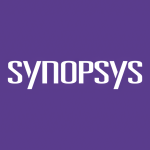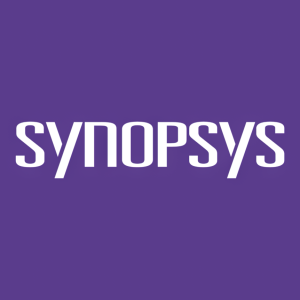Welcome to our dedicated page for Synopsys news (Ticker: SNPS), a resource for investors and traders seeking the latest updates and insights on Synopsys stock.
Synopsys Inc (NASDAQ: SNPS) drives innovation in electronic design automation (EDA) and semiconductor IP solutions, enabling next-generation chip and system development. This dedicated news hub provides investors and industry professionals with official announcements, strategic updates, and market insights directly from Synopsys leadership.
Comprehensive Coverage: Access timely updates including quarterly earnings reports, product launch details, technology partnerships, and executive commentary. Our curated collection features verified press releases covering critical developments in EDA software advancements, silicon IP licensing agreements, and software security innovations.
Strategic Resource: Track Synopsys' role in shaping semiconductor design trends through acquisitions, R&D milestones, and industry collaborations. Stay informed about developments impacting automotive electronics, AI hardware acceleration, and cloud-based design tools—key growth areas in modern computing infrastructure.
Bookmark this page for immediate access to Synopsys' latest corporate communications and technology announcements. Check regularly for updates that matter to semiconductor investors, engineering professionals, and technology analysts worldwide.
Synopsys (NASDAQ: SNPS) has unveiled a digital twin racetrack experience at the Aramco STEM Racing World Finals in Singapore, integrating Ansys Discovery™ software with NVIDIA Omniverse. The initiative provides over 400,000 students across 65 countries with free access to advanced computational fluid dynamics (CFD) simulation tools used by professional F1 teams.
The platform allows students to virtually test aerodynamics of miniature F1 cars, with a simplified version demonstrated at the World Finals and a more advanced version planned for the 2025-2026 racing season. Research shows that 82% of STEM professionals developed interest in their field before high school, underlining the importance of this early exposure to practical engineering tools.
Synopsys (NASDAQ: SNPS) announced that TSMC has certified its Ansys portfolio of simulation and analysis solutions for TSMC's advanced manufacturing processes including N3C, N3P, N2P, and A16™. The collaboration includes an AI-assisted design flow for the TSMC-COUPE™ platform.
Key certifications include Ansys RedHawk-SC and Ansys Totem for power integrity verification, HFSS-IC Pro for electromagnetic modeling on TSMC's N5 and N3P processes, and PathFinder-SC™ for ESD current density checking on N2P process. The partnership enables multiphysics analysis flows and AI-driven photonics optimization, supporting the development of chips for AI acceleration, high-speed communications, and advanced computing.
Synopsys (NASDAQ:SNPS) has announced an expanded collaboration with TSMC to advance AI and multi-die innovation through enhanced EDA and IP solutions. The partnership focuses on certified digital and analog flows for TSMC's N2P and A16 processes using TSMC NanoFlex architecture.
Key developments include the 3DIC Compiler platform for 3D stacking and CoWoS packaging, AI-optimized photonic flow for TSMC-COUPE technology, and the industry's broadest IP portfolio optimized for TSMC's N2/N2P processes. The collaboration has already enabled multiple customer tape-outs and supports various high-performance standards including HBM4, 1.6T Ethernet, and PCIe 7.0.
Synopsys (NASDAQ:SNPS) reported Q3 fiscal 2025 results with revenue of $1.740 billion, up 14% year-over-year. The quarter marked a significant transformation with the closure of the Ansys acquisition on July 17, 2025. GAAP earnings were $1.50 per diluted share, while non-GAAP earnings reached $3.39 per diluted share.
The company's Design Automation segment showed strength, but was offset by weakness in the Design IP business. Synopsys updated its full-year 2025 guidance, projecting revenue between $7.03-7.06 billion. For Q4 2025, the company expects revenue of $2.23-2.26 billion with non-GAAP EPS of $2.76-2.80.
GlobalFoundries (NASDAQ: GFS) and Synopsys (NASDAQ: SNPS) have announced a groundbreaking educational collaboration launching a 'chip design to tapeout' program for universities worldwide. The initiative, piloting at 40 universities this fall, combines Synopsys' electronic design automation (EDA) tools with GlobalFoundries' manufacturing capabilities through their GlobalShuttle Multi-Project Wafer Program.
The program aims to provide students and researchers with hands-on experience in chip design and manufacturing, significantly reducing cost barriers for academic institutions. Synopsys will provide professional-grade EDA tools, training, and design collateral through their Cloud design platform, while GlobalFoundries will handle chip manufacturing.
This initiative is part of GF's University Partnership Program, which currently engages with over 80 universities, 110 professors, and 600 students in various technological fields including radio frequency, radar, quantum computing, and silicon photonics.
Synopsys (Nasdaq: SNPS) has announced expanded Synopsys.ai Copilot generative AI capabilities for its semiconductor design solutions. The enhanced AI features demonstrate significant improvements in design quality and engineer productivity, with workflows being accelerated from days to hours and hours to minutes.
Key highlights include 30% faster ramp time for early-career engineers using knowledge assistant, 2X faster script solutions on average, and 10X-20X faster script generation with PrimeTime. A leading AI infrastructure provider achieved a 35% boost in engineering productivity using formal verification workflows. The company also introduced Ansys Engineering Copilot and demonstrated its first AgentEngineer technology prototype in collaboration with Microsoft.
Ansys (NASDAQ: ANSS) has announced a strategic agreement with NVIDIA to integrate NVIDIA Omniverse technology directly into its simulation solutions. The integration will initially focus on autonomy and computational fluid dynamics (CFD) applications.
The collaboration enables seamless integration through Universal Scene Description (OpenUSD), allowing users to access Omniverse technologies and libraries directly from Ansys interfaces. Key benefits include enhanced digital twin capabilities, improved physical AI development, and immersive visualizations for complex engineering tasks.
A notable implementation is PyAnsys-Heart, a digital twin of the human heart that demonstrates the integration's potential through a speech-to-text interface. The partnership aims to streamline workflow efficiency and accelerate innovation across industries through advanced simulation capabilities.
Synopsys (Nasdaq: SNPS) has scheduled its third quarter fiscal year 2025 earnings release and conference call. The company will announce its financial results on Tuesday, September 9, 2025, after market close, followed by a conference call at 2:00 p.m. Pacific Time / 5:00 p.m. Eastern Time.
The earnings conference call will be accessible via live webcast on the company's investor relations website, where financial and statistical information will be available before the call. A replay will be available following the call until the Q4 and fiscal year 2025 results announcement.
Ansys (NASDAQ: ANSS) has unveiled its 2025 R2 release, introducing significant AI-powered enhancements across its simulation portfolio. The key innovation is Ansys Engineering Copilot, an AI assistant integrated into Ansys products that provides instant access to over 50 years of simulation expertise.
The release features seven products with built-in AI+ functionality, including the new Missions AI+ ODTK tool for orbital accuracy. Notable improvements include 17x faster radiation pattern calculations, expanded Python compatibility with over 40 libraries, and enhanced data management capabilities. The update also introduces GPU acceleration in Icepak software and Cloud Burst Compute availability across six products.
This release focuses on three main areas: AI-driven tools for intuitive simulations, improved data handling and automation, and advanced computation capabilities for real-world modeling.
Synopsys (NASDAQ: SNPS) has completed its acquisition of Ansys, creating a powerhouse in engineering solutions from silicon to systems. The strategic combination, initially announced on January 16, 2024, positions Synopsys to compete in an expanded $31 billion total addressable market.
The merger brings together leaders in silicon design, IP, and simulation analysis, enabling faster innovation in AI-powered products. Former Ansys executives Ajei Gopal and Ravi Vijayaraghavan are joining Synopsys' board of directors. The company plans to launch its first integrated capabilities in H1 2026, focusing on multiphysics across the EDA stack and multi-die advanced packaging.


